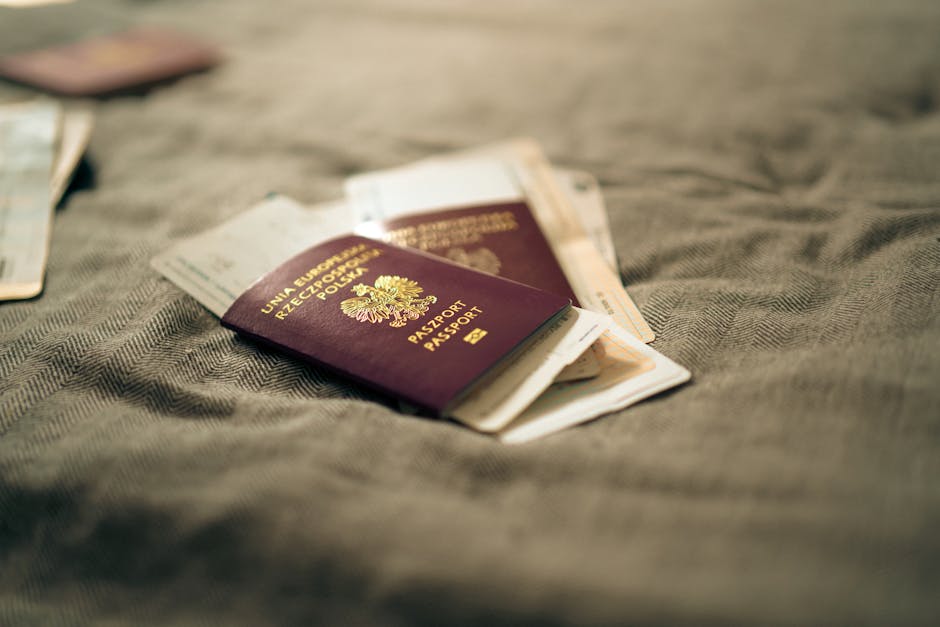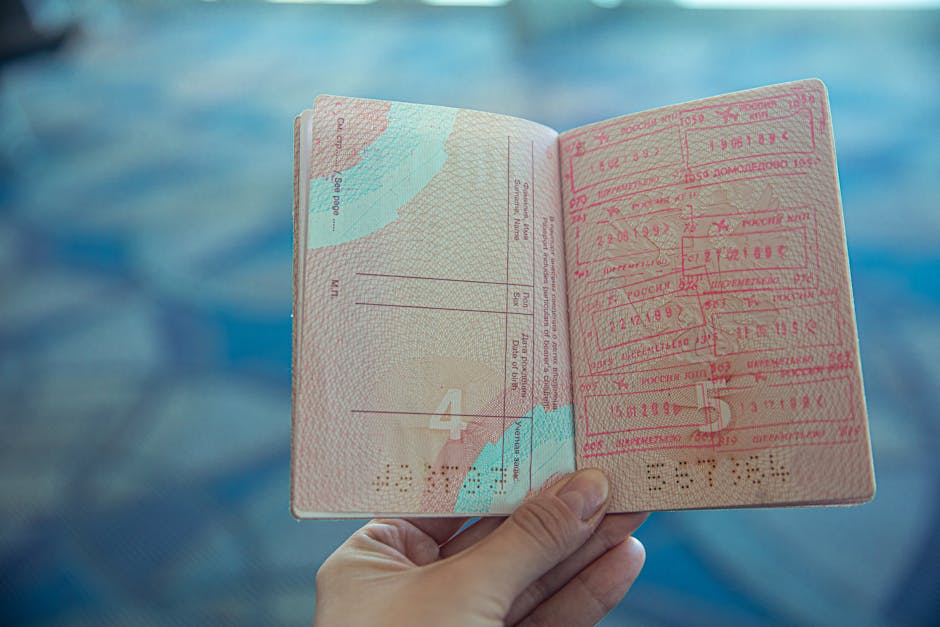China’s 240-Hour Visa-Free Transit
Your Ultimate Guide to a 10-Day Stay!
IMPORTANT DISCLAIMER: This article incorporates the latest significant updates to China’s Transit Visa Exemption policy announced by the National Immigration Administration (NIA). However, visa policies can be subject to further adjustments. Before planning your trip and traveling, you MUST verify the latest policies with the official website of the Chinese Embassy or Consulate in your country/region, or through official channels of China’s National Immigration Administration (NIA).
Exciting news for international travelers! China has significantly expanded and optimized its Transit Visa Exemption (TWOV) policy, extending the permissible stay from the previous 72 or 144 hours to a generous 240 hours (10 days) for eligible nationals from 54 countries.

China’s major cities like Shanghai are now more accessible with the extended 240-hour visa-free transit
This major enhancement, effective immediately as of the latest announcement from China’s National Immigration Administration, also includes an increase in the number of eligible entry/exit ports to 60 across 24 provinces (autonomous regions and municipalities) and broader permitted areas of activity.
“This game-changing policy opens up incredible opportunities for a more substantial short visit to explore the diverse landscapes, rich culture, and vibrant cities of China while transiting to a third country or region. If you’ve ever wanted a taste of China without the hassle of a full visa application, this 10-day transit visa exemption is your golden ticket!”
This guide will detail everything you need to know about the new 240-hour visa-free transit policy.
The 240-hour visa-free transit policy applies to citizens of the following 54 countries:
European Countries (40):
- Austria
- Belgium
- Czech Republic
- Denmark
- Estonia
- Finland
- France
- Germany
- Greece
- Hungary
- Iceland
- Italy
- Latvia
- Lithuania
- Luxembourg
- Malta
- Netherlands
- Poland
- Portugal
- Slovakia
- Slovenia
- Spain
- Sweden
- Switzerland
- Monaco
- Russia
- United Kingdom
- Ireland
- Cyprus
- Bulgaria
Other Regions:
- Romania
- Ukraine
- Serbia
- Croatia
- Bosnia and Herzegovina
- Montenegro
- North Macedonia
- Albania
- Belarus
- Norway
- American Countries (6): United States, Canada, Brazil, Mexico, Argentina, Chile
- Oceanian Countries (2): Australia, New Zealand
- Asian Countries (6): South Korea, Japan, Singapore, Brunei, United Arab Emirates, Qatar

54 countries now qualify for China’s 240-hour visa-free transit policy
To be eligible for the 240-hour visa-free transit, applicants must meet the following conditions:
Nationality Requirement
You must be a citizen of one of the 54 countries listed above.
Passport Requirement
- Hold a valid international travel document (passport) with at least 3 months of validity from the date of entry.
- Meet the entry requirements for the third country (or region) you are transiting to.
Itinerary Requirement
- Hold a connecting ticket (e.g., an onward air ticket) or relevant proof with a confirmed date and seat to a third country or region within 240 hours (10 days) of arrival in China.

Proper documentation is essential for visa-free transit approval
Entry Procedures
- Fill out an “Arrival Card for Temporary Entry Foreigners.”
- Undergo inspection and questioning by China’s immigration inspection authorities at the port of entry.
Crucial Itinerary Note
Your journey must be Country A → China (transit) → Country B.
- Example of an eligible itinerary: New York (USA) → Shanghai (China) → Bangkok (Thailand).
- Example of an ineligible itinerary: New York (USA) → Shanghai (China) → Los Angeles (USA).
Hong Kong, Macau, and Taiwan are considered separate regions from mainland China for this policy. Therefore, an itinerary like London (UK) → Beijing (China) → Hong Kong is eligible.
Eligible foreigners can apply for the 240-hour visa-free transit at immigration inspection authorities at 60 designated ports across 24 provinces (autonomous regions and municipalities). The 240-hour (10-day) stay period begins from 00:00 on the day following entry.
Complete List of Applicable Ports and Permitted Areas
| Province/Region | Applicable Ports | Permitted Area of Stay |
|---|---|---|
| Beijing | Beijing Capital Int’l Airport, Beijing Daxing Int’l Airport | Beijing Municipality |
| Tianjin | Tianjin Binhai Int’l Airport, Tianjin International Cruise Home Port | Tianjin Municipality |
| Hebei | Shijiazhuang Zhengding Int’l Airport, Qinhuangdao Port | Hebei Province |
| Liaoning | Shenyang Taoxian Int’l Airport, Dalian Zhoushuizi Int’l Airport, Dalian Port | Liaoning Province |
| Shanghai | Shanghai Hongqiao Int’l Airport, Shanghai Pudong Int’l Airport, Shanghai Port | Shanghai Municipality |
| Jiangsu | Nanjing Lukou Int’l Airport, Sunan Shuofang Int’l Airport, Yangzhou Taizhou Int’l Airport, Lianyungang Port | Jiangsu Province |
| Zhejiang | Hangzhou Xiaoshan Int’l Airport, Ningbo Lishe Int’l Airport, Wenzhou Longwan Int’l Airport, Yiwu Airport, Wenzhou Port, Zhoushan Port | Zhejiang Province |
| Anhui (New) | Hefei Xinqiao Int’l Airport, Huangshan Tunxi Int’l Airport | Anhui Province (Entire Province) |
| Fujian | Fuzhou Changle Int’l Airport, Xiamen Gaoqi Int’l Airport, Quanzhou Jinjiang Int’l Airport, Wuyishan Airport, Xiamen Port | Fujian Province (Entire Province – Expanded) |
| Shandong | Jinan Yaoqiang Int’l Airport, Qingdao Jiaodong Int’l Airport, Yantai Penglai Int’l Airport, Weihai Dashuibo Int’l Airport, Qingdao Port | Shandong Province |
| Henan | Zhengzhou Xinzheng Int’l Airport | Henan Province |
| Hubei | Wuhan Tianhe Int’l Airport | Hubei Province (Entire Province – Expanded) |
| Hunan | Changsha Huanghua Int’l Airport, Zhangjiajie Hehua Int’l Airport | Hunan Province |
| Guangdong | Guangzhou Baiyun Int’l Airport, Shenzhen Bao’an Int’l Airport, Jieyang Chaoshan Int’l Airport, Nansha Port, Shekou Port | Guangdong Province |
| Hainan (New) | Haikou Meilan Int’l Airport, Sanya Phoenix Int’l Airport | Hainan Province (Entire Province) |
| Chongqing | Chongqing Jiangbei Int’l Airport | Chongqing Municipality |
| Guizhou (New) | Guiyang Longdongbao Int’l Airport | Guizhou Province (Entire Province) |
| Shaanxi | Xi’an Xianyang Int’l Airport | Shaanxi Province (Entire Province – Expanded) |
| Shanxi (New) | Taiyuan Wusu Int’l Airport | Taiyuan City, Datong City |
| Heilongjiang | Harbin Taiping Int’l Airport | Harbin City |
| Jiangxi (New) | Nanchang Changbei Int’l Airport | Nanchang City, Jingdezhen City |
| Guangxi | Nanning Wuyu Int’l Airport, Guilin Liangjiang Int’l Airport, Beihai Fucheng Airport, Beihai Port | Nanning, Guilin, Beihai, Liuzhou, Wuzhou, Fangchenggang, Qinzhou, Guigang, Yulin, Hezhou, Hechi, Laibin (12 cities) |
| Sichuan | Chengdu Shuangliu Int’l Airport, Chengdu Tianfu Int’l Airport | Chengdu, Luzhou, Deyang, and 8 other cities (total 11 cities) |
| Yunnan | Kunming Changshui Int’l Airport, Lijiang Sanyi Int’l Airport, Mohan Railway Port | Kunming, Lijiang, Xishuangbanna, and 6 other prefectures/cities (total 9 prefectures/cities) |
Note: This table shows the complete list of 24 provinces/regions covered by the 240-hour visa-free transit policy. “New” indicates provinces newly added to the expanded policy.
One of the most significant enhancements is the ability for transiting foreigners to travel across provinces within the permitted areas of stay of these 24 provinces/regions.
Key Ports and Permitted Areas
Beijing
Ports: Beijing Capital Int’l Airport, Beijing Daxing Int’l Airport
Permitted Area: Beijing Municipality
Shanghai
Ports: Shanghai Hongqiao Int’l Airport, Shanghai Pudong Int’l Airport, Shanghai Port
Permitted Area: Shanghai Municipality
Guangdong
Ports: Guangzhou Baiyun Int’l Airport, Shenzhen Bao’an Int’l Airport, Jieyang Chaoshan Int’l Airport
Permitted Area: Guangdong Province
Newly Added Provinces
Anhui, Guizhou, Hainan, Jiangxi, Shanxi now fully included with expanded permitted areas
Major Expansion
Fujian, Hubei, Shaanxi now allow travel throughout entire province
Cross-Provincial Travel
Example: Enter through Shanghai, visit Hangzhou (Zhejiang), Suzhou (Jiangsu), then depart from Nanjing

Designated ports now include 60 airports and seaports across China
Duration of Stay
A maximum of 240 hours (10 days), calculated from 00:00 on the day following entry.
Permitted Area of Activity
You can travel within the designated areas of the 24 provinces (autonomous regions and municipalities) listed in the table above, including cross-provincial travel within these permitted zones.
Special Provisions
If your country has a mutual visa exemption agreement with China or is eligible for a unilateral visa exemption policy that offers different terms (e.g., longer stay), you may be able to choose the more favorable policy. Consult with immigration officials upon arrival.
“The new policy’s most revolutionary aspect is the cross-provincial flexibility. Previously, travelers were often restricted to the immediate region around their entry port. Now, with proper planning, you can experience multiple destinations within one transit period.”

China’s efficient high-speed rail network makes cross-provincial travel easy during your 10-day stay
- Onward Ticket is Key: You must have a confirmed onward ticket to a third country or region. Failure to provide this may result in denied entry under the transit policy.
- Immigration Inspection: Be prepared for questioning by immigration officials. They may ask for supporting documents such as hotel reservations or your travel itinerary within China.
- No Overstaying: Overstaying the 240-hour limit will result in penalties, including fines and potential future entry restrictions.
- Policy Changes: While this is a major and positive update, policies can always be adjusted. It’s highly recommended to check the latest announcements from the National Immigration Administration (NIA) or the relevant Chinese Embassy/Consulate before your trip.
- Accommodation Registration: Upon arrival, if you are not staying in a hotel (which typically handles this for you), you must register your temporary residence with the local police station within 24 hours.

Ensure your passport gets the correct entry stamp indicating visa-free transit
❓ Can I transit through Hong Kong or Macau and still be eligible?
✅ Yes, this is perfectly fine! For the purpose of this transit policy, Hong Kong SAR and Macau SAR (and Taiwan) are considered “third countries/regions” distinct from Mainland China. So, an itinerary like London → Beijing (transit stay) → Hong Kong (final destination or further transit) is eligible.
❓ After my 240-hour visa-free transit ends, can I immediately re-enter Mainland China from Hong Kong for another 240-hour visa-free transit?
✅ Generally, yes, this should be possible, provided you meet all criteria for each transit. Each entry under the transit policy is treated as a new application. So, if you depart Mainland China to Hong Kong (a third region), and then have a valid ticket from Hong Kong transiting through Mainland China to a different third country (like Canada), you can apply for the 240-hour visa-free transit again upon arrival in Shanghai from Hong Kong. The key is that for each transit entry into Mainland China, you must be en route to a different subsequent international destination.
❓ Do I need to enter and exit Mainland China through the same port/city?
✅ Not necessarily the same port, but your travel must adhere to the permitted regions for the ports you use. The new policy allows entry at any of the 60 designated ports and permits cross-provincial travel within the 24 designated provinces/regions. For example, you could enter through Shanghai and, after traveling within the permitted Yangtze River Delta region (and other permitted interconnected regions), depart from Nanjing or Hangzhou if your onward international flight is from there.
❓ What specific documents should I have ready besides my passport and onward ticket?
✅ While the primary documents are your valid passport (with at least 3 months validity) and your confirmed onward ticket to a third country/region within 240 hours, it’s wise to also have:
- A copy of your travel itinerary within China
- Hotel reservations (if any)
- Completed arrival card
More FAQ Highlights
❓ Can I work or study during my 240-hour stay?
No. The 240-hour visa-free transit is strictly for transit purposes, which can include tourism, visiting friends/family, or short-term business discussions related to your transit.
❓ What if my onward flight is delayed or cancelled?
Immediately contact the Public Security Bureau (PSB) Exit-Entry Administration office in the city you are in. Explain the situation and provide proof from the airline. Do not simply overstay.
With a generous 240 hours (10 days) and the ability to travel across 24 provinces/regions, your transit stop in China can transform into an exciting mini-adventure! Here are four curated itinerary themes to inspire you, utilizing the new policy’s flexibility.
Theme 1: Imperial Grandeur & Ancient Wonders (North China Focus)
Possible Entry Ports: Beijing (PEK/PKX), Tianjin (TSN), Shijiazhuang (SJW)
Possible Exit Ports: Xi’an (XIY), Beijing (PEK/PKX), Shanghai (PVG/SHA)
Key Highlights: Imperial palaces, Great Wall, Terracotta Army
Days 1-4: Beijing
- Explore the Forbidden City, Tiananmen Square, Temple of Heaven
- Hike a section of the Great Wall (Mutianyu or Badaling)
- Wander through the Summer Palace and old Hutongs
Days 5-7: Xi’an (Shaanxi Province)
- Marvel at the Terracotta Warriors
- Cycle atop the ancient City Wall
- Explore the Muslim Quarter and the Great Mosque
Days 8-9: Options based on interest
Option A (History & Culture):
Fly to Luoyang or Zhengzhou for Longmen Grottoes or Shaolin Temple
Option B (Mountain Scenery):
Fly to Taiyuan/Datong for Yungang Grottoes or Mount Wutai
Day 10: Depart China

Theme 2: Modern Marvels & Water Town Charm (East China Focus)
Possible Entry/Exit Ports: Shanghai (PVG/SHA), Hangzhou (HGH), Nanjing (NKG)
Key Highlights: Futuristic cities, classical gardens, water towns
Days 1-3: Shanghai
- Walk The Bund, explore Pudong’s skyline (Oriental Pearl Tower)
- Visit Yu Garden, Jing’an Temple, and French Concession
- Enjoy diverse culinary experiences
Days 4-5: Suzhou (Jiangsu Province)
- Explore classical Chinese gardens (Humble Administrator’s Garden)
- Take a canal boat ride
Days 6-7: Hangzhou (Zhejiang Province)
- Cycle around West Lake, visit Leifeng Pagoda
- Explore Lingyin Temple and tea plantations
Days 8-9: Options based on interest
Option A (Historical Capital):
Travel to Nanjing to visit Sun Yat-sen Mausoleum
Option B (Nature):
Visit Huangshan (Yellow Mountain) for stunning scenery
Day 10: Depart China

Theme 3: Southern Flavors & Scenic Landscapes (South & Southwest Focus)
Possible Entry/Exit Ports: Guangzhou (CAN), Chengdu (CTU), Guilin (KWL)
Key Highlights: Pandas, karst mountains, tropical beaches
Days 1-3: Chengdu (Sichuan Province)
- Visit the Giant Panda Breeding Research Base
- Explore Jinli Ancient Street and Kuanzhai Alleys
- Indulge in Sichuan hotpot
Days 4-6: Guilin & Yangshuo (Guangxi)
- Take a Li River cruise
- Cycle through karst landscapes
- Watch “Impression Liu Sanjie” show
Days 7-9: Options based on interest
Option A (Tropical Escape):
Fly to Hainan for beaches and resorts
Option B (Unique Landscapes):
Explore Guizhou’s waterfalls and villages
Day 10: Depart China

Theme 4: “Pick & Mix” – Cross-Provincial Freedom
With the expanded policy allowing travel across 24 provinces/regions, create your unique itinerary:
Sample Combination:
- Days 1-3: Beijing (North)
- Days 4-6: Shanghai (East)
- Days 7-9: Chengdu (Southwest)
- Day 10: Depart from Chengdu
Planning Tips:
- Use high-speed trains between major cities
- Book domestic flights in advance
- Stay within permitted regions
“This new flexibility allows travelers to experience China’s incredible diversity – from imperial capitals to modern megacities, from pandas to tropical beaches – all within one 10-day transit period!”

China’s new 240-hour (10-day) visa-free transit policy is a fantastic development for eligible international travelers. It provides a significantly longer window to explore major cities and regions, experience diverse cultures, and even undertake multi-city itineraries within the permitted zones without the need for a standard tourist visa.
Key Advantages:
- Extended 10-day stay (vs previous 3-6 days)
- Expanded geographical coverage (24 provinces)
- Cross-provincial travel flexibility
- More entry/exit port options (60 total)
Remember:
- Always verify current policy before travel
- Ensure you meet all eligibility requirements
- Have confirmed onward travel arrangements
- Stay within permitted areas and time limit

With proper planning, China’s 240-hour visa-free transit offers unforgettable experiences
If you require a longer stay or your purpose of visit is other than transit (e.g., work, study), you will still need to apply for the appropriate Chinese visa.
Source: National Immigration Administration News Center, Updated May 2025
Enjoyed this article? Consider buying me a coffee to support more content like this!
💖 1 people have clicked to support this article.


